You may know a ton of fun facts about animals, but we bet you haven't heard these jaw-dropping truths
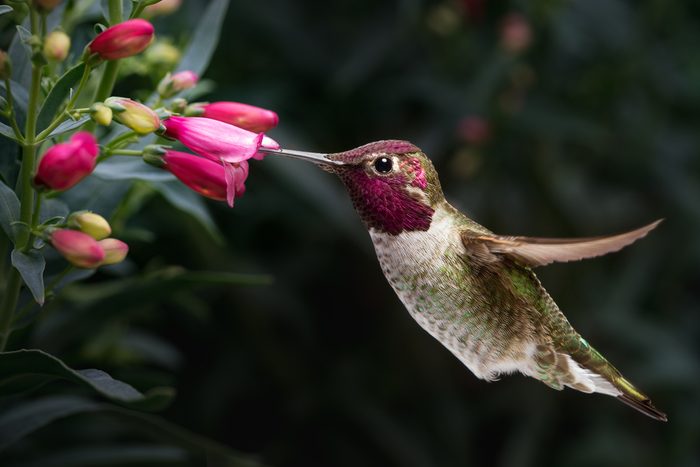
60 Fun Facts About Animals You Probably Didn’t Know Before

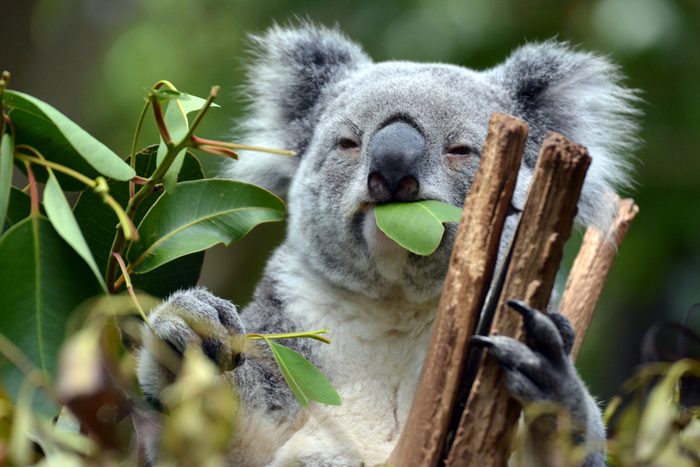
Koalas
These slow-moving, eucalyptus-eating marsupials native to Australia are beloved for their sweet demeanors and distinctly non-human adorableness. However, koalas do share one feature in common with homo sapiens: fingerprints. What’s more, their fingerprints, when analyzed under a microscope, are virtually indistinguishable from ours in the way they loop and whorl. Researchers believe that koalas adapted this feature—which is also present in primates such as chimpanzees—to better grasp the branches they climb to forage for leaves.

Elephants
Elephants have a fantastic sense of smell that is 100 times more sensitive than a human’s, according to the Smithsonian’s National Zoo & Conservation Biology Institute. They’re also agile and can walk across a beam. Despite these strengths, elephants are unable to jump. That’s because they have inflexible ankle joints and what an evolutionary researcher at the Royal Veterinary College in London called “wimpy lower-leg muscles” in an interview with Live Science. For those reasons, elephants have trouble running for more than a short distance.

Platypuses
As silly as platypuses look, you certainly wouldn’t want to get on the bad side of one. One of the fun facts about animals that look innocent, like the platypus, is their strange defense mechanisms. The heels of the males’ back feet have spurs that can release venom, making these wild animals one of the few poisonous mammals, according to the World Wildlife Fund. While the venom isn’t strong enough to kill a human, it’s extremely painful and can cause swelling and even hyperventilation. That’s definitely enough to make platypuses one of the innocent-looking animals that are dangerous, so steer clear.

Sloths
You probably think of sloths as one of the slowest wild animals out there—and they are pretty slow, to be sure! But they actually have a neat talent that you may not know about. They’re skilled swimmers, and they swim about three times faster than they usually move. According to Live Science, they do the breaststroke just like humans do, and it’s a vital skill for them to survive in rainforests that have a tendency to flood. If you thought it wasn’t possible for sloths to get any cuter, just imagine one swimming!
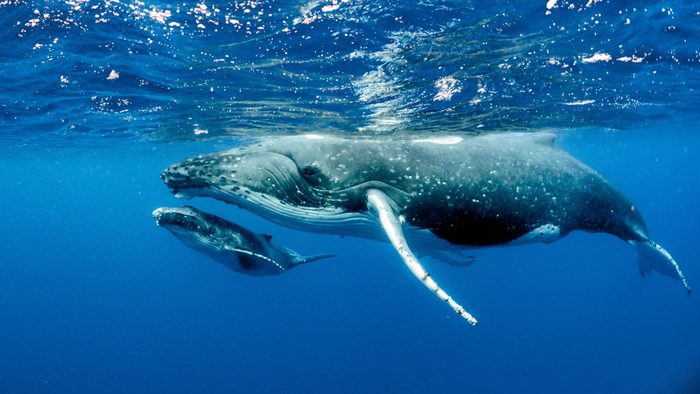
Whales
These massive aquatic mammals cannot actually breathe underwater—they have to periodically return to the surface to breathe. So that raises the question, how do they sleep? Do they sleep? Well, they do—but only half of their brains sleep at a time. Known as unihemispheric slow-wave sleep, this method allows the whales to get enough rest while also staying alert enough to consciously breathe and be on the lookout for any dangers.
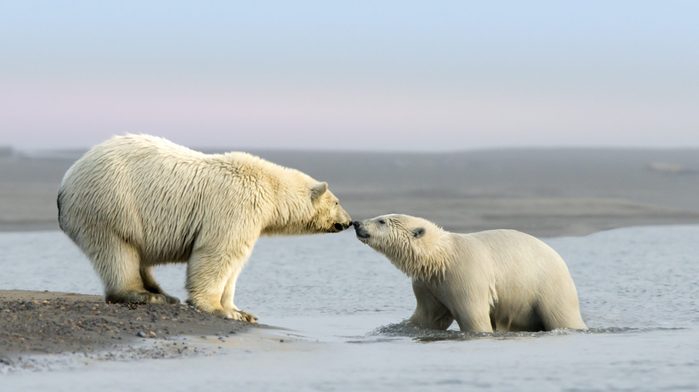
Polar bears
According to Polar Bears International, polar bears use an adorable, unique type of greeting—they touch noses! This is also how they request to share food; a bear will approach another bear that’s feeding and touch its nose to ask permission to join in on snack time.
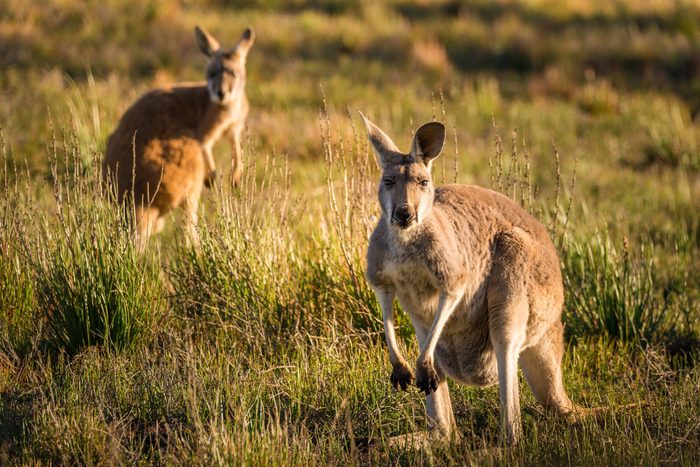
Kangaroos
These large Australian marsupials are known for their ability to hop great distances, which is the primary way they get around. But an odd feature they have is that they can’t walk backward, partly because of the structure of their powerful rear feet and their large tails. This is the reason you’ll find a kangaroo on the Australian Commonwealth Coat of Arms—the designers wanted to symbolize the way the nation was only moving forward, so they picked an animal that physically can’t move backward. (The Commonwealth Coat of Arms also has an emu on it—emus can’t walk backward either.)
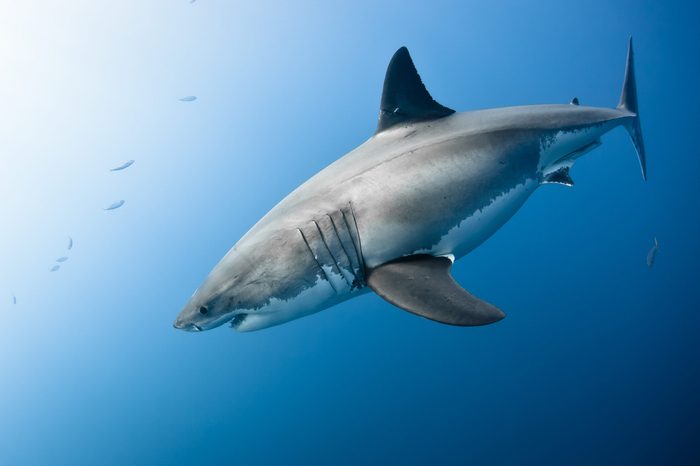
Sharks
“Just keep swimming …” sings Dory, the blue tang in Finding Nemo. For some types of sharks, this is more than just a motivational saying—it’s life or death! In fact, one of the many fun facts about sharks is that several types of sharks use a special type of breathing that requires them to swim quickly with their mouths open. This allows oxygen to reach their gills, according to Live Science. While some sharks can breathe even if they’re still, great white sharks, makos and whale sharks (among others) must move constantly to take in oxygen.

Peacocks
First of all, the idea that “peacock” is the correct name for all these birds is one of those animal facts we all get wrong. “Peacock” only describes the males; the females are technically called “peahens,” and both sexes are considered “peafowl.” Another fascinating tidbit about peacocks is that they can be born with partially or completely white coloring due to a genetic mutation; this is known as leucism, and these birds are stunning.
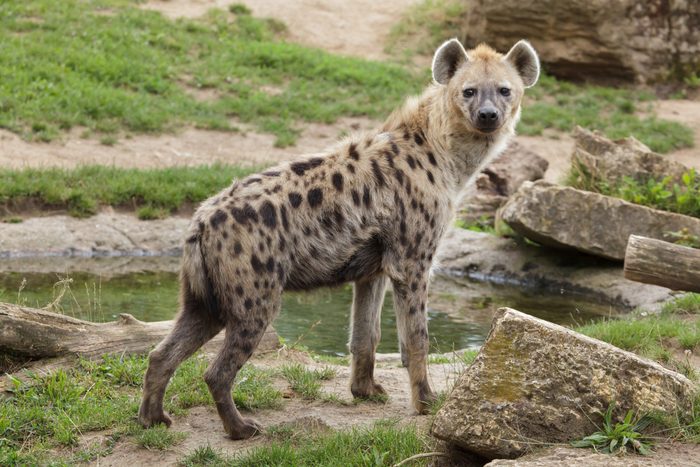
Hyenas
Hyenas are generally thought of and portrayed as dog-like creatures, but these wild animals are actually more closely related to cats, according to National Geographic. Their scientific classification puts them in the “Feliformia” suborder, one of two suborders in the order Carnivora. Feliformia is the “cat-like” carnivores; the other suborder, unsurprisingly, is “Caniformia.” But hyenas are still different enough from big cats to have their own separate family classification—entirely their own family, “Hyaenidae.”
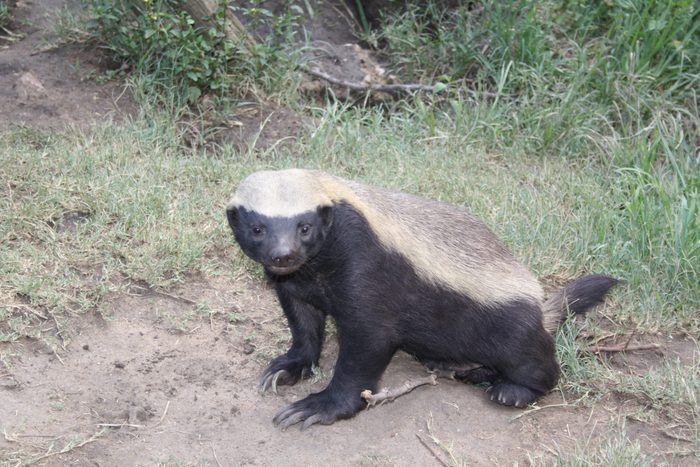
Honey badgers
Despite their name, honey badgers are not sweet. Rather, they’re ferocious, according to the San Diego Zoo. They’re also just about indestructible and can eat venomous snakes. When they’re young, their mothers slowly introduce them to poisonous animals, like tiny scorpions, and they develop a sort of immunity to the toxins. Oh, and “badger” is something of a misnomer. Though they look similar to European badgers, they’re not closely related—they’re part of the weasel family.
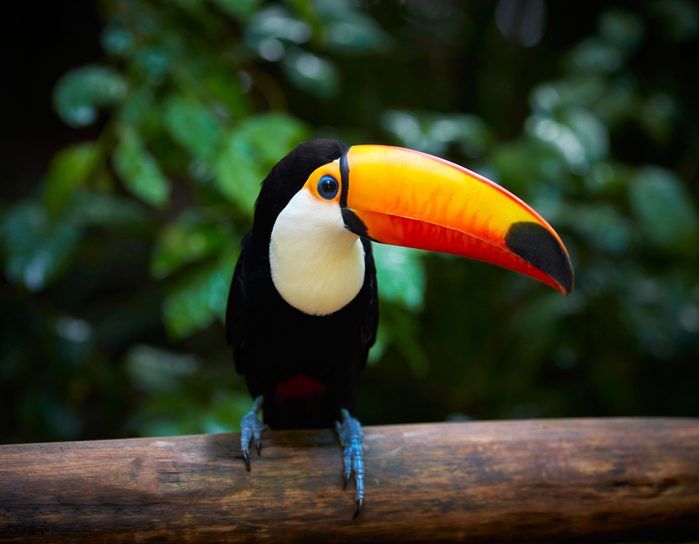
Toucans
If these birds‘ colorful appearance and huge, almost plush-looking beaks give you the impression that they’re a fun-loving species, well … you’d actually be right! According to National Geographic, both males and females have large beautiful bills. Their bold bills may play a role in their courtship ritual, as well as in their self-defense. Toucans also use their bills for reaching fruit on branches that can’t support their weight, and the serrated edges on the bill come in handy for peeling fruit.
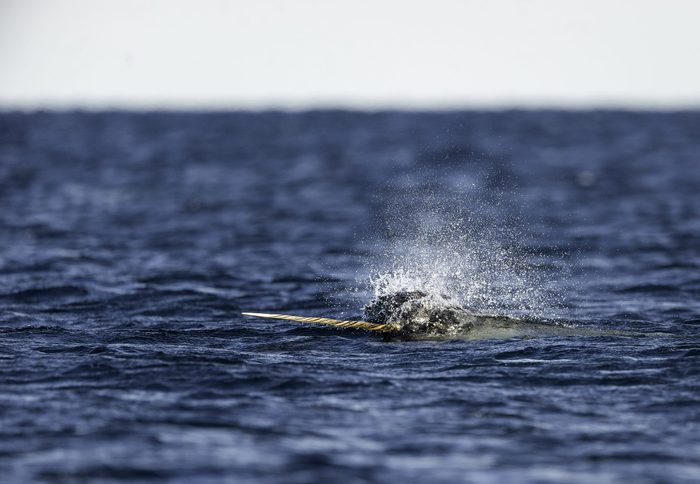
Narwhals
This “sea unicorn” is a double-take-worthy creature if ever there was one. And get this: The “horn” or “tusk” that makes them so famous is actually a tooth! It juts right through the male narwhal’s upper lip and reportedly plays a role in attracting a mate. That’s one of those fun facts about animals you’d almost rather not know!

Quokkas
These smiley Australian mammals are all over Instagram, but they’re more than a pretty face. They’re reportedly the happiest animal in the world. These good-vibe creatures are native to the western Australian island of Rottnest, a nature preserve where freshwater is scarce. Luckily, though, these adorable little guys can survive for a full month without drinking water, mainly because their diet includes leaves and vegetation that contain a lot of moisture.
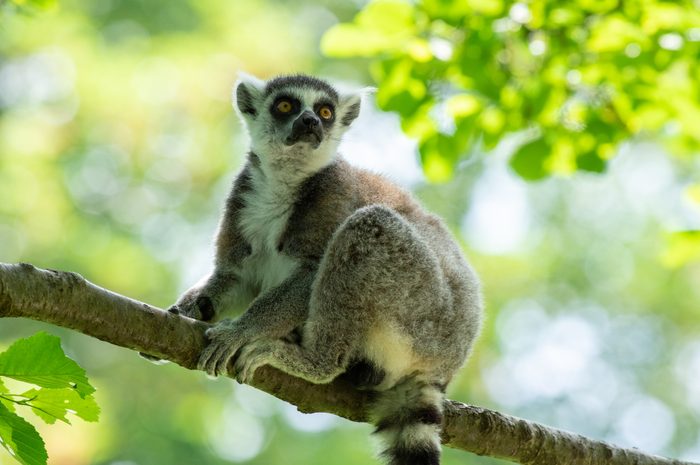
Lemurs
Though there are more than 100 different species of lemur, lemurs are considered among the most critically endangered mammals in the world due to their low overall number. Some of the most notable types of these Madagascar-dwelling creatures are the ring-tailed lemurs, whose tails are longer than their bodies, and the blue-eyed black lemur, which, according to the San Diego Zoo, is the only primate besides humans that can have blue eyes.

Camels
These gentle giants (well, mostly—you certainly wouldn’t want to be on the wrong end of a kick or spit from one!) have been nicknamed “the ships of the desert.” While that’s partly because they’ve carried cargo across the desert throughout much of human history, it’s also because of their distinctive, “rolling” walk. They move their front and back legs on the same side of their body at the same time (so their two left legs move, then their two right legs, and so on), making them “rock” as they walk.
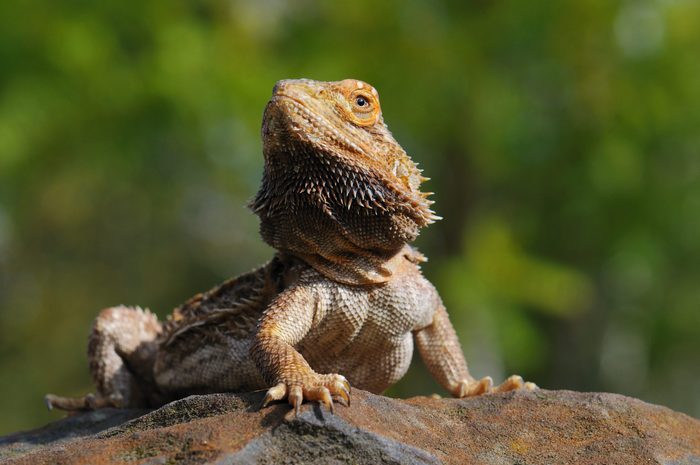
Bearded dragons
With a name like that, you’d think these creatures would be the epitome of ferocity—and they look pretty intimidating, for sure. But, according to VCA Animal Hospitals, they’re actually quite friendly and gentle. These curious lizards flick their tongue to explore their surroundings. And they have the adorable quirk of waving their arms to show recognition.

Butterflies
Although butterflies have long, tube-like tongues called proboscises that they unfurl to suck in flower nectar, their ability to taste doesn’t come from their mouths. Instead, it comes from their feet, which allow butterflies to tell which flowers they land on are the right ones to lay their eggs on, according to the San Diego Zoo. When butterflies stand on a leaf, they taste it to figure out if their caterpillars will be able to eat it.
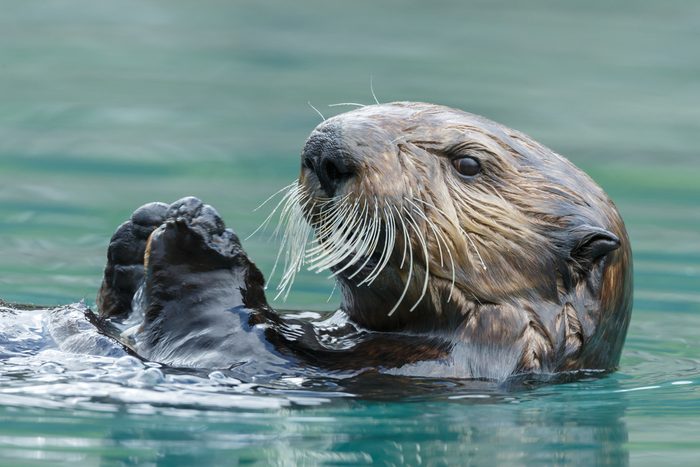
Sea otters
There are 13 species of otter worldwide (everywhere but Australia and Antarctica)—and sadly, 12 species of these marine mammals are classified as vulnerable or endangered animals. This is news that’s hard to bear when confronted with their inherent cuteness, witnessed in viral photos of mother-and-child pairs holding hands to avoid drifting away from each other as they snooze on the water.

Jackrabbits
Sure, they have those long ears, all the better to hear you with. But did you know those impressive ears also serve another valuable purpose? They shed heat, allowing these rabbits to cool their bodies using a strategy requiring zero water loss (so no sweating!). That’s one way to stay cool in the summer.

Pigeons
Some people call these common urban residents—also, and more accurately, known as rock doves —”rats with wings.” But that’s giving this incredible, intelligent species short shrift. Not only can pigeons be trained to deliver messages across great distances, but researchers at Keio University in Tokyo discovered they could also be trained to distinguish between the paintings of Monet, Picasso, Braque, Matisse, Cézanne and Renoir. Now that’s one of the fun facts about animals you probably didn’t know!
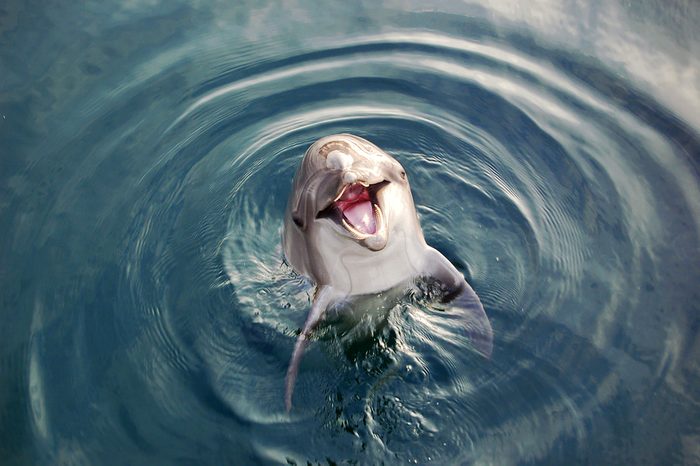
Dolphins
Incredible as this animal fact may seem, dolphins call each other by “name.” Research at the University of St. Andrews found that bottlenose dolphins can call out to a bottlenose dolphin they want to interact with by mimicking the distinct whistle of that dolphin. According to the researchers, bottlenose dolphins appear to be unique as nonhuman mammals to use learned signals as individually specific labels for different social companions as part of their communication system.
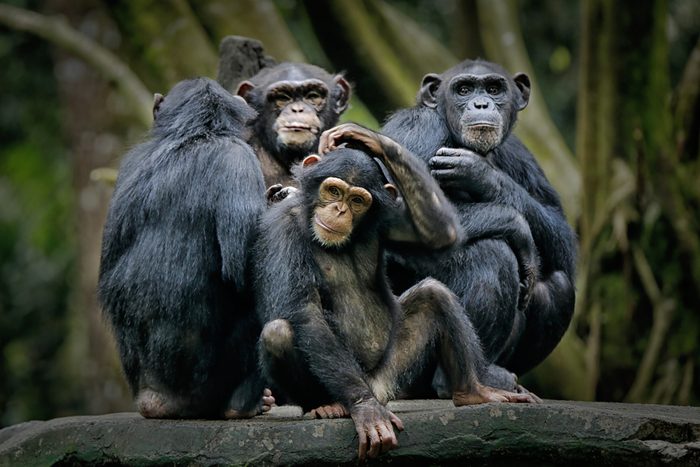
Chimpanzees
Not convinced that men and chimps are closely related? In 2015, Royal Society Open Science reported that scientists studying chimpanzees in Guinea had discovered that the animals frequently drank fermented palm sap, an alcoholic, naturally occurring sort of wine. The cool clincher? To gather and drink this liquor, the chimps DIYed utensils—namely, crushed leaves they used as “sponges” to sop it up and move it to their mouths (often in copious enough quantities that some of them actually got drunk).

Bats
Like pigeons, bats are another amazing group of animals that are unjustifiably reviled by humans. Certain species, like the little brown bat (Myotis lucifugus), have experienced population declines across the Northeastern United States due to a fungal disease called White-nose syndrome. These bats can eat 1,000 mosquitoes an hour. Perhaps our favorite bat fact of all: They give birth upside down and catch their newborns in their wings.

Cats
You may have named your beloved flufferpuss Mr. Ring Ding after your favorite sweet treat, but ironically, sweet is one taste that domestic and some wild cats cannot detect. That’s because they’re lacking sweet sensors on their tongues and elsewhere in their mouths, according to scientists at the Monell Chemical Senses Center. Monell researchers discovered in a later study, though, that cats do have at least seven bitter taste receptors, which may help protect them in the feeding process. Who knew?!
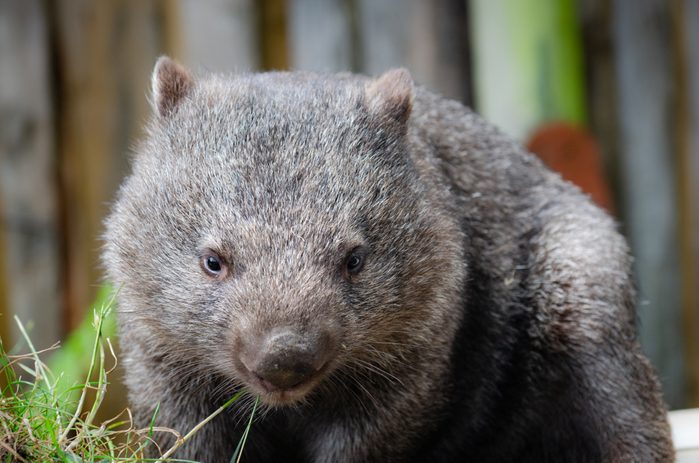
Wombats
There’s a factoid that’s gotten a lot of attention lately (and it’s no surprise): Wombats poop is square, a truly weird phenomenon! The reasons for this have been a mystery for years, but a team of scientists at the Georgia Institute of Technology decided to do a more rigorous analysis. Turns out, wombat poop is extremely dry, since wombats, which live in arid climates, extract all moisture from their food. National Geographic reports that their intestines are also irregularly shaped and stretchy, which helps to sculpt dry scat into its unique cube-like shape.
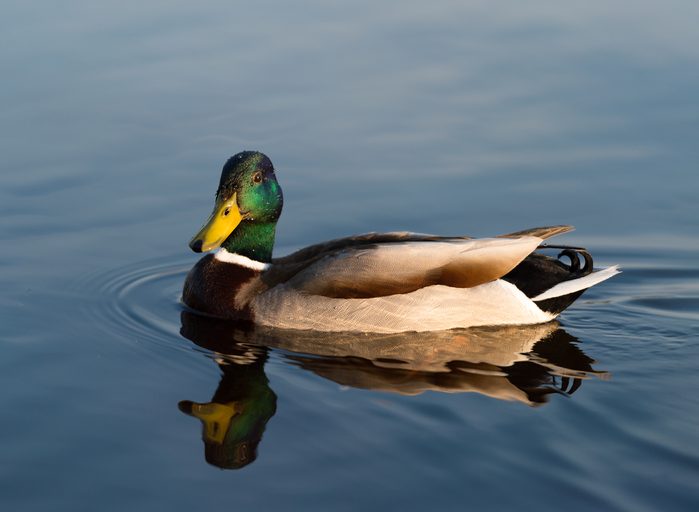
Ducks
California is a hotspot for surfing, for both humans and ducks! Since at least 2010, according to a study in The Wilson Journal of Ornithology, people have reported spotting mallards everywhere from Santa Barbara to San Diego catching some waves and allowing their feathery bodies to be carried to shore. The reason: food, namely sand crabs. It’s a behavior scientists think the ducks learned from watching shorebirds.
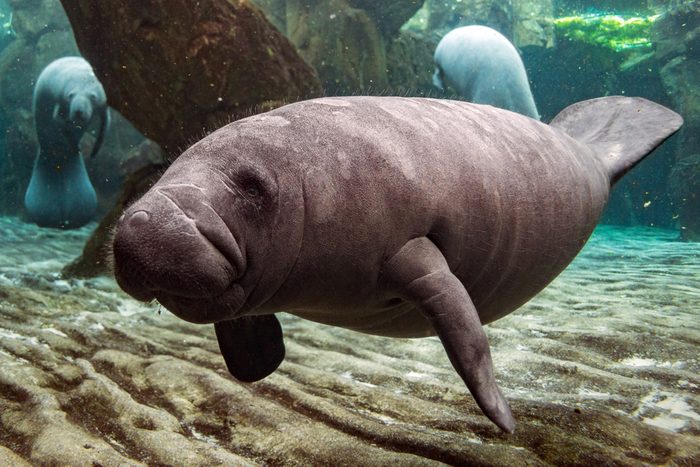
Manatees
Also known as sea cows, these plump, distant elephant relatives can weigh as much as 1,300 pounds. Manatees are also vegetarian, which means that to have enough energy to swim around ocean shallows in places such as Florida, they chomp on sea grass and algae and can eat 10% of their body weight every single day. That’s a whole lotta sea salad!
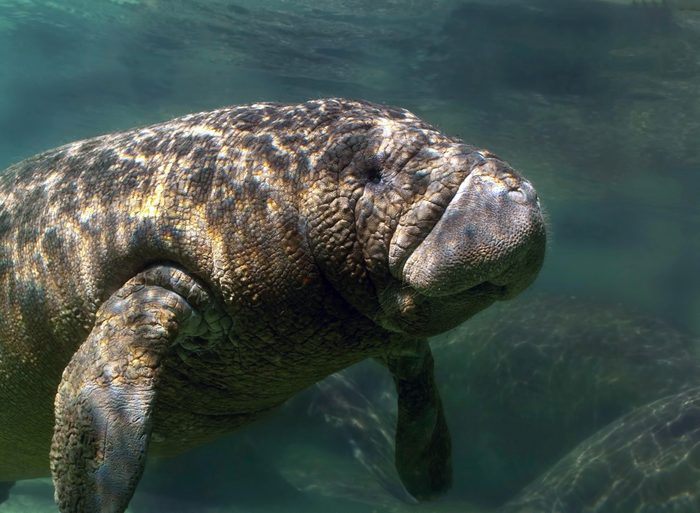
Manatees (part 2)
These gentle creatures share water space with some of the fiercest predators out there—namely, alligators. You’d think that would be bad news for manatees. But scientists report this cool animal fact: The two species coexist quite nicely. Alligators have been spotted swimming next to or directly over a manatee’s back—although there’s speculation that the manatees may have been benefitting from a back scratch, since they’re known to scratch their backs on kayaks and other structures. And manatees aren’t shy about bumping alligators to get them to move out of their way, according to PBS.
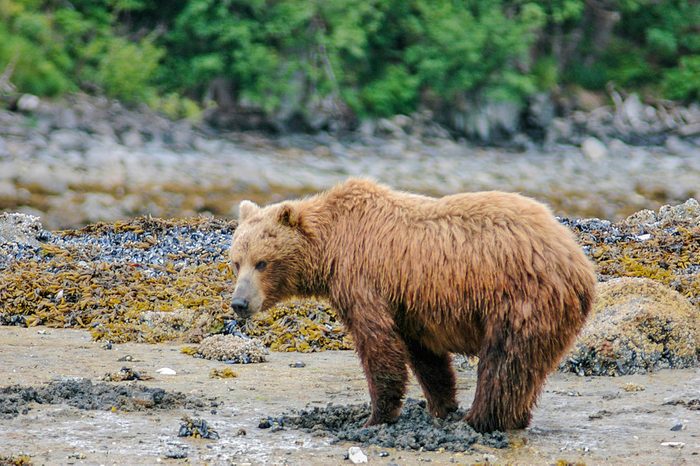
Grizzly bears
You’re not seeing things: These powerful (and unfortunately endangered) bears do indeed have humpbacks. The hump is actually a strong mass of muscles attached to the bear’s backbone, per the National Wildlife Federation, developed to help grizzlies with strength for their digging.
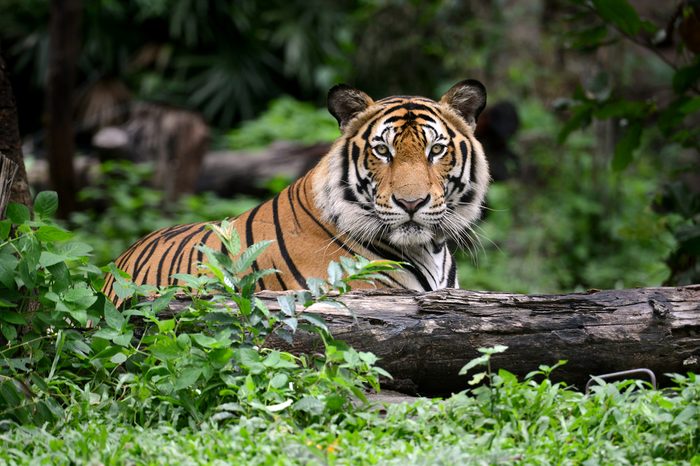
Tigers
It’s perhaps common animal-fact knowledge by now that the stripes on every tiger are as individual as fingerprints or snowflakes—no two patterns are alike. These patterns serve as camouflage, with the stripes making it hard for prey to see all its predator at once. But did you also know that those patterns on a tiger’s fur repeat on its skin? Sadly, it’s possible that the Sumatran tiger could disappear in your lifetime, since they are critically endangered, with fewer than 300 estimated to live in the wild, according to the International Tiger Project.

Giraffes
These docile African ruminants, which can grow as tall as 20 feet, have a very unusual feature: Their tongues are a deep purple. Although there’s lots of speculation as to the whys of the extra-dense melanin of giraffes’ mouth organs—and no hard facts—scientists believe that the dark color is to protect them from sunburn as they munch leaves high up out in the strong sun.

Dogs
Did you ever leave your dog alone for longer than usual, only to come home and swear that she missed you more than usual? You probably weren’t imagining things. While dogs can’t exactly tell how many hours have passed, they sense the passage of time. They also have an innate sense of when things should happen—like their regularly scheduled walks and meals.
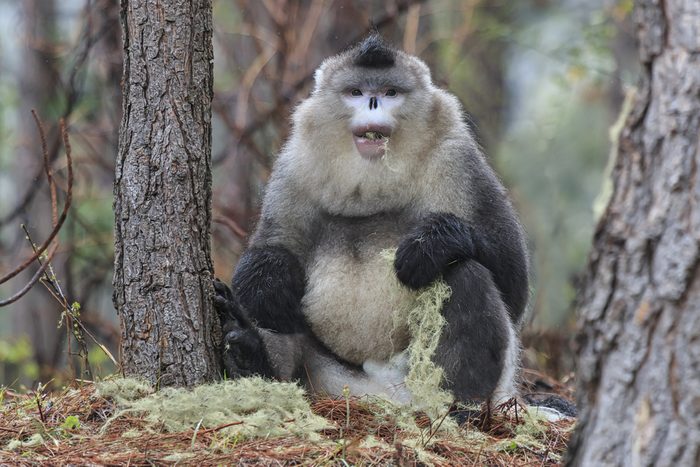
Myanmar snub-nosed monkeys
With all the bad news about animal species going extinct around the world, there’s good reason to celebrate when new species are actually found. One such recently discovered species is the Myanmar snub-nosed monkey, aka the sneezing monkey. How did it get this nickname? Its upturned nose gets water in it when it rains, which the monkey sneezes out, reports the Guardian.
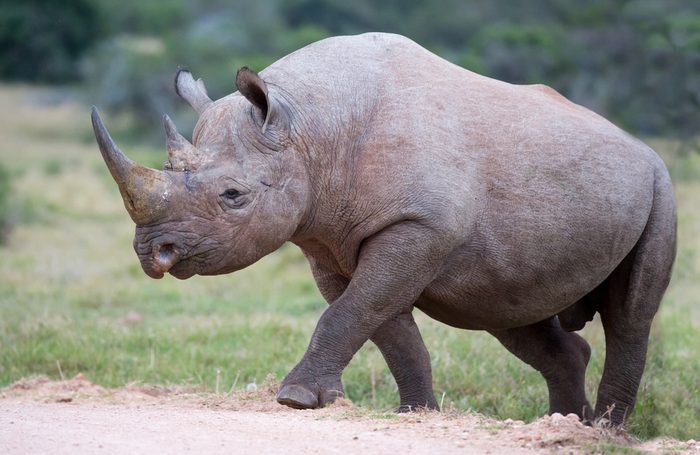
Rhinos
Most animal horns are made of bone. Not so the rhinoceros. As researchers at Ohio University learned in 2006, they’re completely made of keratin, the same stuff that comprises human hair and fingernails. Threading through the core of the keratin and making it super strong are calcium deposits, which are non-existent on the horn’s outer, softer surface. The scientists also found melanin in the middle of the horn, which protects the core from the breakdown of the sun’s UV rays. Over time, that surface gets whittled into its pointy shape by such factors as sun exposure and horn clashes with other animals.
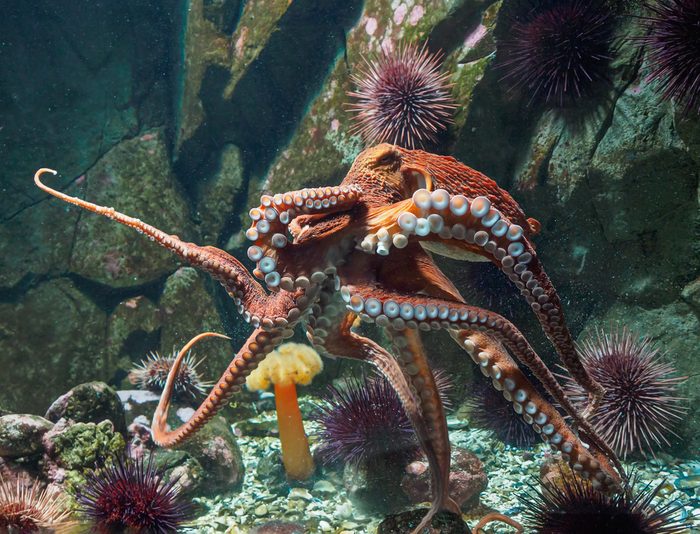
Octopuses
Why would any animal need multiple hearts and brains? We can find out by studying these tentacled dwellers of the deep. An octopus has three hearts—two to pump blood to its gills, and one to pump blood to the remainder of its body. It also has an astounding nine (!) brains—one that serves as its central control station, and eight others that are actually located in each arm. A team of researchers at the University of Washington found that each octopus arm can make decisions on its own, bypassing the main brain.
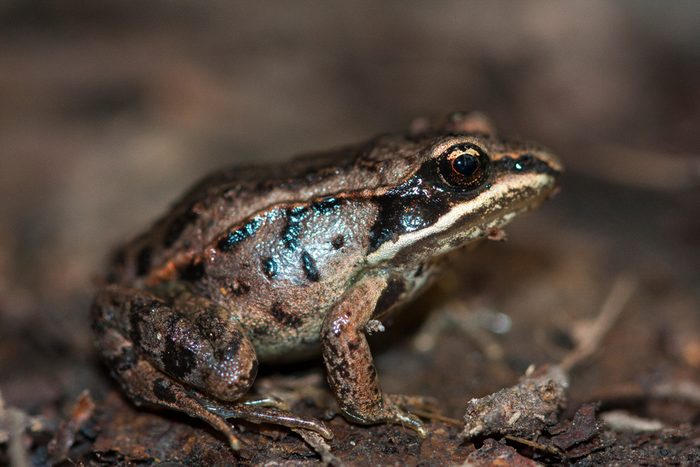
Frogs
Literal freezing is definitely not recommended for humans or other mammals, since it leads to, well, death. But for a species of Alaskan wood frog, freezing (mostly) solid—with two-thirds of the water in their bodies turning to ice, as reported by the Los Angeles Times—allows them to withstand brutal winters and live until the spring. At that point, they thaw and carry on with their existence.
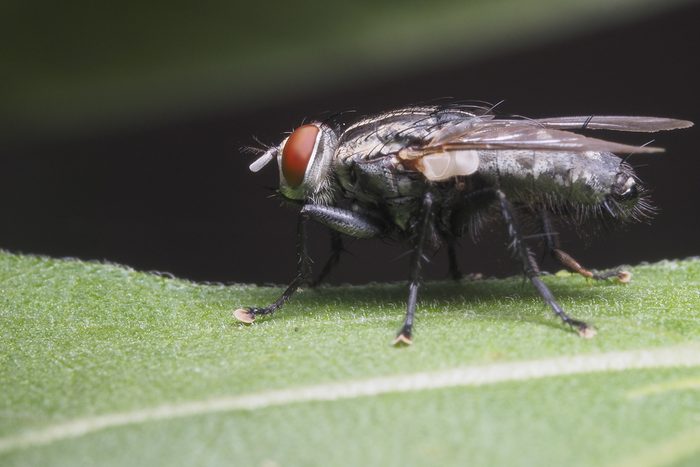
Houseflies
The common household nuisance (Musca domestica) may not have any vocal cords (actually, no insects do). But that doesn’t mean it can’t make any noise. By flapping its wings 200 times per second, it makes a sound at a frequency that our ears interpret as a pitch along the F major scale, reports an article in the Electric Engineering Journal.

Hippos
It turns out, giraffes aren’t the only large natives of the African continent that require protection from the powerful sun. Hippos do too. They try to avoid direct sunlight by staying in the water during the day and feeding at night. Unlike mammals (including humans) that sweat to cool off their skin, hippos secrete an oily fluid, known as “blood sweat” (although it’s not actually blood or sweat, according to Scientific American). Instead, the excreted fluid functions as a skin moisturizer, an antibiotic and a sort of water repellant, protecting a hippo’s skin from becoming too waterlogged while they’re in the water.
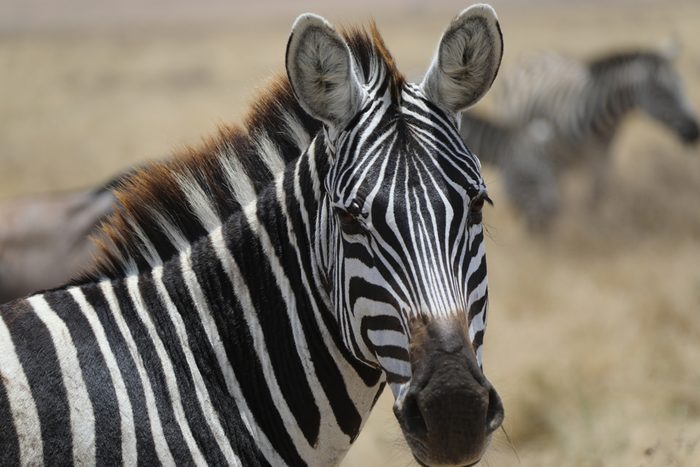
Zebras
Ever wonder why zebras have those vivid black-and-white stripes—since they couldn’t possibly serve to make them inconspicuous out on the grasslands of Africa? Oddly, the stripes do actually help them camouflage into the open savannas and wooded areas, particularly in certain light. The stripes break up their body’s outline, helping the zebra blend into the grass and shadows. But those black-and-white zags have another function too—they help deter nasty biting horseflies, according to research published in PLOS One.

Hummingbirds
Tiny, iridescent hummingbirds sure move fast, darting from flower to tube-shaped flower in your backyard garden so fast you can hardly see them. But their wingbeats—of up to 80 every second—don’t just propel them forward. They also help them move backward, which is a feat that no other bird can accomplish without help from the wind.
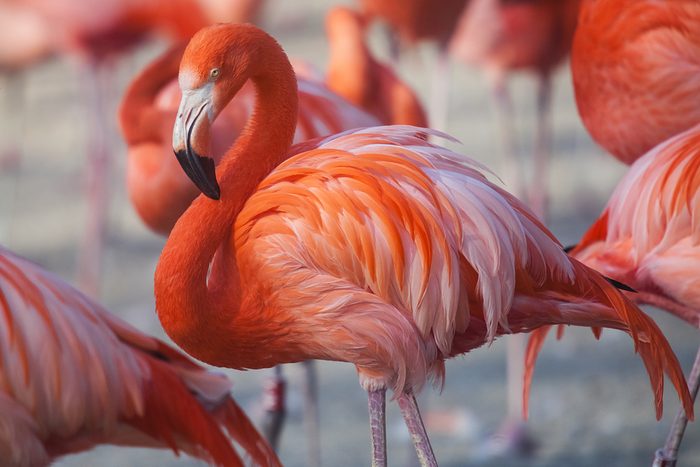
Flamingos
It’s a strange but true animal fact that bears repeating, just because it’s so darn cool: Famously pink flamingos aren’t pink. They’re actually born grey. And they’d stay that way too, if it weren’t for their highly specialized diet of shrimp and blue-green algae, according to BBC’s Science Focus. These foods contain natural carotenoid pigments, one of which is called canthaxanthin, which causes flamingo feathers to gradually turn pink over time.

Shrimp
Speaking of shrimp, they are uniquely odd little critters, anatomically speaking. They have 10 legs, an exoskeleton, and many of their vital organs—not just their brain but their heart, stomach, ovaries and testicles—are located inside their heads.
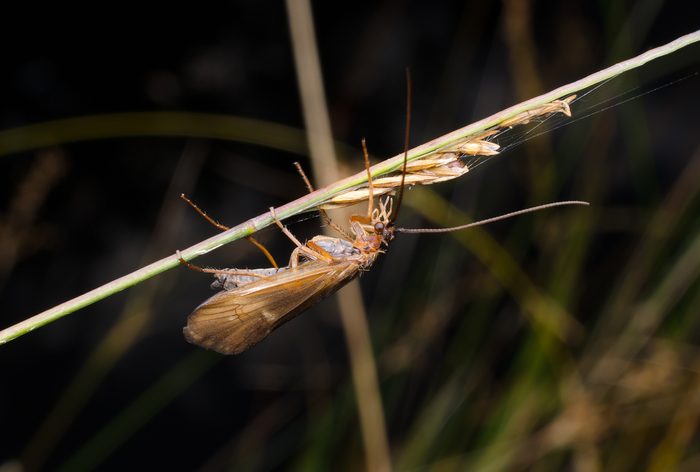
Caddisflies
Widely found in freshwater habitats, caddisflies are mothlike insects that have an enviable ability: They can make their own protective houses. Using the same “silk” they produce to make cocoons as larvae, they stick together tiny bits of natural materials including pebbles, twigs, sand and leaves to form tube or cone-shaped cases. They add on to these portable homes as they grow bigger.

Cows
They moo. They chew grass. They make milk. And they also … make friends?! You heard that right. According to research from The University of Northampton, bovines can have besties, and just being around them causes them to feel more relaxed and less stressed. We feel that!

Snails
Living on land or in the water, snails are gastropods that in some cases can grow up to a foot long (ugh). They’re notorious for their slime trails, and researchers have found these may have some surprising uses, as antioxidants that may also reportedly regenerate human skin and act as all-natural wound-healers. Though we’re not sure if “snail slime benefits” count as fun facts about animals—or gross ones.
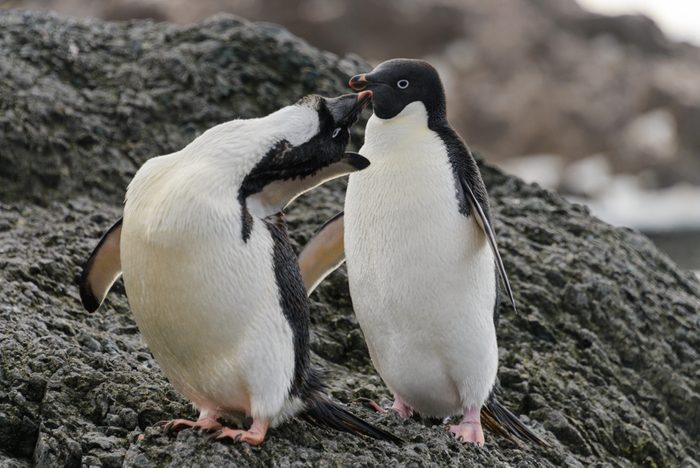
Adélie penguins
Forget about buying the love of your life a diamond ring. If you’re a male penguin, what you’re really interested in finding is a pebble to lay at the feet of your beloved. This gift has a practical purpose, though. The Adélie species of penguin make their nests out of pebbles to keep the eggs inside safe from melting snows, according to Seaworld.
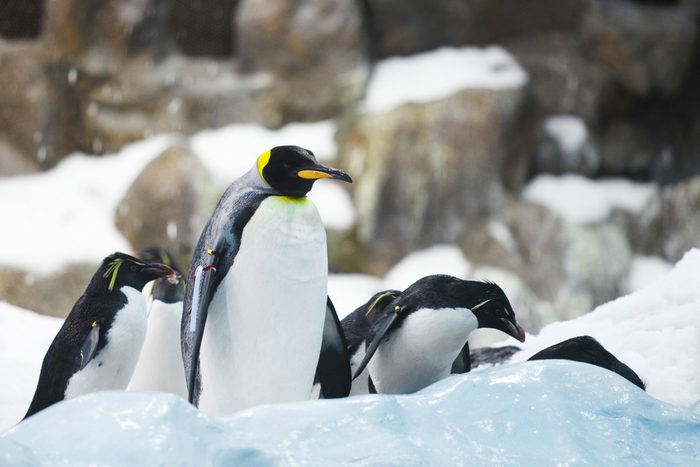
Emperor penguins
There’s something so joyful about a bunch of cute penguins jumping into the air before plunging from the ocean onto the ice. Here again, penguins are practical. According to BBC’s Blue Planet, just before they make this move, they release air bubbles from their feathers, which form a coat around them that acts as a lubricant, reducing drag and helping them launch into the air.
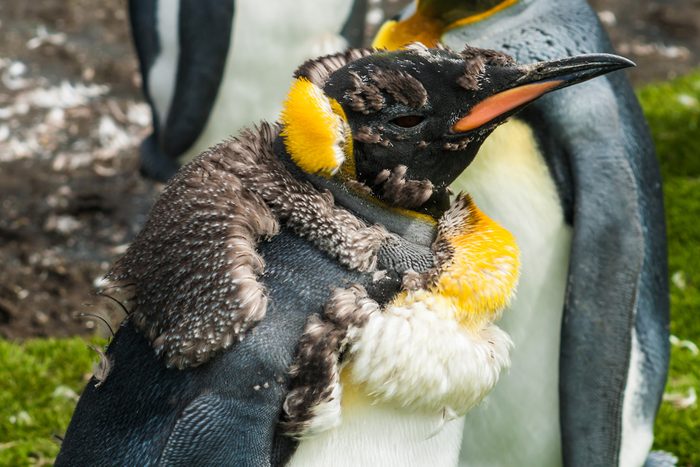
Even more penguins
Even the most adorable animals have less attractive parts. Once a year, penguins go through what’s called a “catastrophic molt,” and it’s as shocking as it sounds. They lose all their feathers at once, which means no swimming or fishing for dinner for the two weeks or longer it takes for new feathers to grow in.

Squirrels
They ate all your tulip bulbs in the spring. In the autumn, they dug up all your planting beds to hide their stupid acorns. And all winter long they chased the poor hungry birds away from the bird feeder. Still, these backyard thugs are surprisingly good neighbors. They’ll actually adopt orphaned baby squirrels as their own.
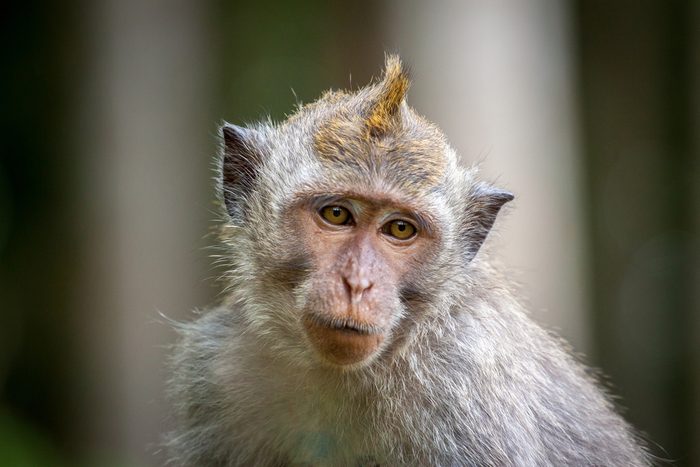
Macaques
The videos are all over YouTube: macaque monkeys in Japan and elsewhere picking the pockets of tourists and taking their coins. What could possibly be inspiring these acts of larceny? Hunger and thirst. The clever macaques take their coins straight to vending machines and use them to buy themselves a little snack and beverage.

Giant pandas
Fact: Pandas are no longer endangered but are now classified as vulnerable, meaning they’re still at risk of extinction. Fact: Pandas are ADORABLE. Fact: Pandas don’t just eat bamboo, as most of us have been led to believe (although bamboo does comprise a whopping 99% of their diet). Actually, giant pandas are omnivores, and when they can get their paws on other snacks, they also enjoy noshing on small animals and fish.
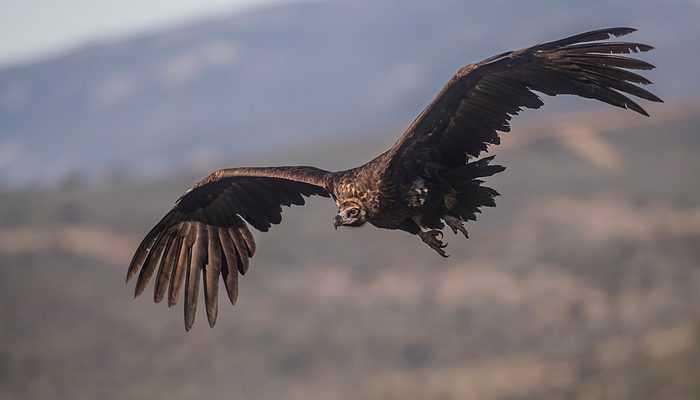
Vultures
Sure, they eat roadkill (actually doing us a huge ecological favor). But that’s not the least party-friendly behavior exhibited by vultures. According to Smithsonian magazine, since these massive birds do not have any sweat glands, they’re forced to find another way to keep cool in the hot months. That way: pooping on their own feet.
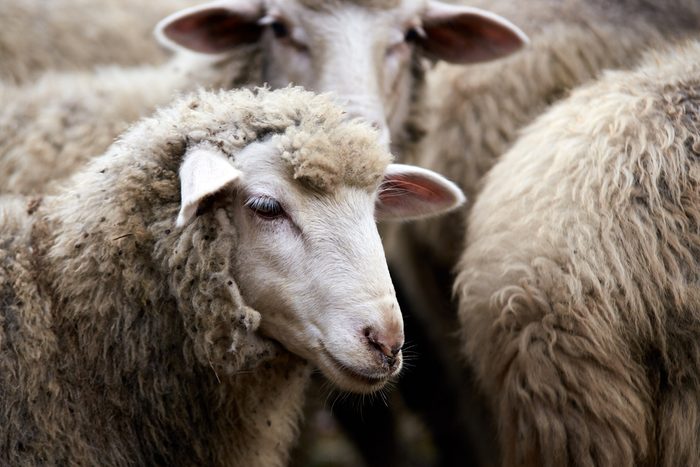
Sheep
According to an article in Modern Farmer magazine, sheep have a lot more going for them than their cuddly good looks. To wit, their rectangular pupils give them superb peripheral vision and depth perception. Good luck sneaking up on these herbivores!

Goats
Not to be outdone for unusualness in the farmyard, goats have a few odd traits themselves. For starters, they have no teeth in their upper jaws. They also have accents, which vary from country to country. And as if all that wasn’t peculiar enough, reports Mental Floss, one species of goat is known to have its muscles freeze up when it gets startled, causing it to fall over in a faint-like motion.

Chickens
Turns out, humans aren’t the only animals that experience REM—the rapid eye movement stage of sleep during which we most commonly dream. Chickens have REM sleep too, according to The Poultry Site. And that’s not all (there really are an endless number of fun animal facts!): Chickens also experience something called unihemispheric slow-wave sleep, in which one half of their brain stays awake while the other half rests.
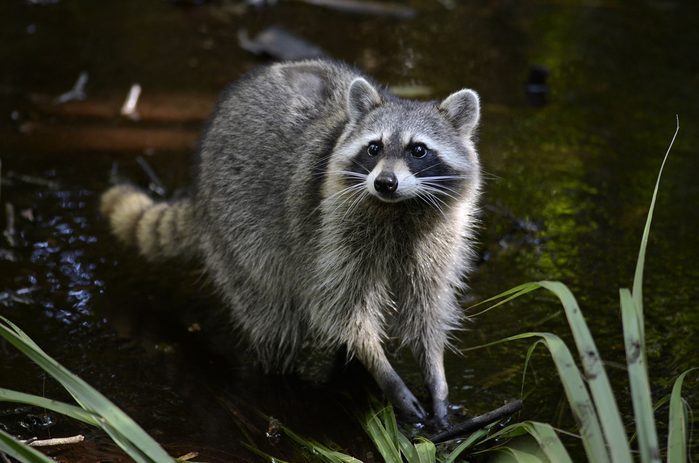
Raccoons
Sure it’s annoying when the raccoons get into the trash and make a meal—and a mess—out of your week-old garbage. But find a little place of admiration in your heart for these masked scavengers, because some of them have been witnessed dunking their food in water in an action that looks suspiciously like they’re giving it a preliminary wash.
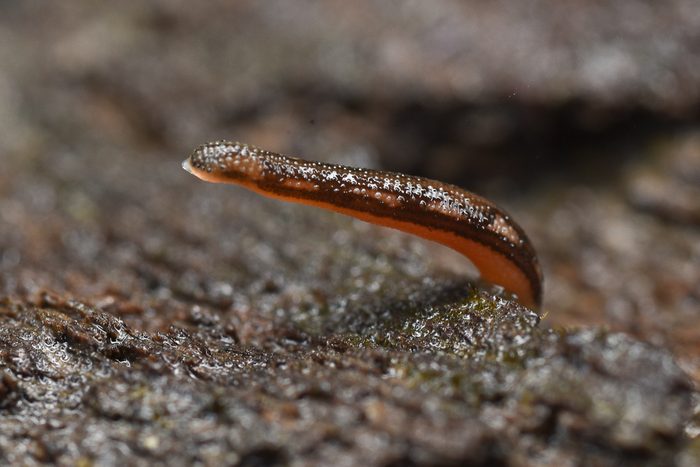
Leeches
Few folks since the end of the Victorian era, when leeches were used as a curative, have any fondness for these predatory worms. And it turns out, the distaste for them is well-founded. According to the American Museum of Natural History, leeches have three jaws, with 50 to 60 teeth apiece—and each jaw moves in a sawing motion to make a separate incision into your skin … all the better to suck out your blood. Er, no thank you.

Honeybees
Honeybees living in a colony perform all sorts of tasks—cleaning and guarding the hive, feeding larvae, collecting pollen and flower nectar. Scientists at the University of Illinois reported their findings that bees have personalities that cause them to do well at the jobs they’re best suited to, with “thrill seekers,” for example, excelling in scouting out new nest sites.
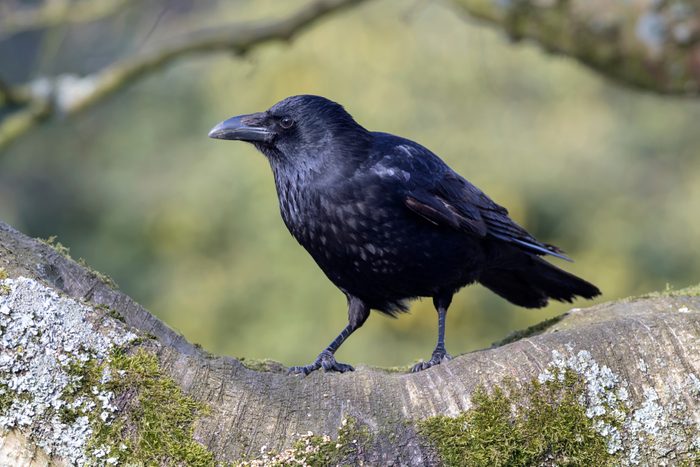
Crows
Faced with the seemingly impossible task of penetrating the hard shells of walnuts in order to gobble the sweetmeats inside, crows in Japan have learned to lay the nuts out in the middle of the road so that cars can run them over and crack them open. But perhaps most amazing of all, according to a PBS report: The crows may be reading traffic lights in order to know when it’s safe to arrange the nuts, and when it’s safe to hop out and chow down on them.
Why trust us
At Reader’s Digest, we’re committed to producing high-quality content by writers with expertise and experience in their field in consultation with relevant, qualified experts. We rely on reputable primary sources, including government and professional organizations and academic institutions as well as our writers’ personal experiences where appropriate. To report this piece, we tapped Lela Nargi, a veteran journalist who covers science, sustainability, climate and agriculture. We’ve gone the extra step and had Marcy Lovitch, a fact-checker with 20-plus years of experience researching for national publications including Marie Claire, Good Housekeeping, Family Circle, Glamour, Seventeen, Real Simple, Forbes and InStyle magazines, verify that all the quotes and fun facts about animals are attributed correctly and have credible sourcing. Read more about our team, our contributors and our editorial policies.
Sources:
- Smithsonian National Zoo & Conservation Biology Institute: “Happy Asian Elephant Awareness Month”
- WWF Australia: “Platypus”
- San Diego Zoo: “Honey Badger”
- Minnesota Zoo: “Bactrian Camel”
- San Diego Zoo: “Butterfly, Moth and Skipper”





















